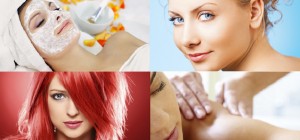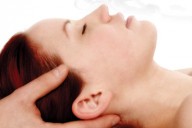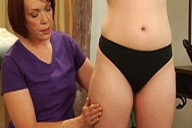Campaign for Safe Cosmetics
01. In less than a year, the Campaign for Safe Cosmetics convinced OPI Nail Products Inc., the leading manufacturer of salon nail polish, to remove two of the three most toxic chemicals (linked to cancer and birth defects) from its entire product line, and the company says it is searching for a safer alternative to the third.
Beginning in March 2006, the Campaign for Safe Cosmetics employed face-to-face meetings between Campaign leadership and OPI executives, a print ad campaign in OPI’s hometown of Los Angeles, dozens of grassroots actions nationwide and outreach to media to put pressure on the company. In August 2006 it agreed to remove dibutyl phthalate from all its products, and in March 2007 OPI sent a letter to Campaign partner Women’s Voices for the Earth detailing its commitment to removing toluene from all products
2. In February 2007, the Campaign for Safe Cosmetics and author David Steinman jointly released lab results at a press conference showing the presence of a hidden carcinogen, 1,4-Dioxane, in children’s bath products. The chemical is a byproduct of manufacturing and therefore does not appear on product labels.
The public response was overwhelming and built over time: within two months Campaign staff fielded hundreds of phone calls and e-mails from concerned parents all over the United States, many of whom had called the manufacturers whose products were tested. All of the parents wanted to know how they could find safer products for their kids. The press release was posted on blogs and circulated via e-mail, as well as reported in the media, and the Campaign sent an action alert to subscribers detailing how to find safer products.
One short-term result was a letter from one of the companies whose products were tested, Johnson & Johnson, confirming that it was no longer selling two of the products found to contain the carcinogen. For the long-term, this story highlighted the failings within the FDA to adequately protect the public from known carcinogens in personal care products, even this vulnerable population.
3. As of June 2007, more than 570 cosmetics companies have signed the Compact for Safe Cosmetics, a pledge to remove dangerous chemicals from personal care products. Only a portion of these companies were included in our original outreach to companies in 2004; most have come to us after learning about the Compact via media, the natural products industry and CSC’s presence at trade shows, among others.
4. In 2007, the Campaign for Safe Cosmetics worked closely with advocates and legislators in Maryland, Oregon and Washington to craft state legislation related to making cosmetics safer. Oregon was successful in passing in June 2007 a memorial to Congress calling on the FDA to require pre-market testing of ingredients in cosmetics and to eliminate toxins from cosmetics.
5. The national Campaign for Safe Cosmetics continues to work with smaller local and niche groups on this issue, particularly with teens and college students Our grassroots leaders have given approximately 20 talks to women’s and health-affected groups, as well as teens, in the last several months.



